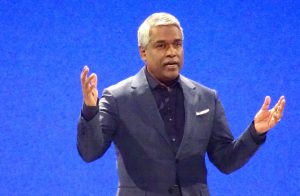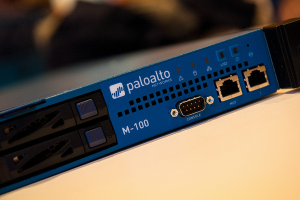Is the Smart Home buzzing at SxSW 2014?
![]() I’d been on the fence about going to SxSW this year until I learned of the Connected Home Developers Garage. The event host, iControl, invited me to an early look at their setup, demonstrating one of their partners’ solutions (see their demo in the video below). That partner was Time Warner cable, which is using iControl’s software to power their smart home services. What interests me most about this is Time Warner’s expectations for an emerging market, and the brand’s role in educating consumers of the promise and potential for connected homes.
I’d been on the fence about going to SxSW this year until I learned of the Connected Home Developers Garage. The event host, iControl, invited me to an early look at their setup, demonstrating one of their partners’ solutions (see their demo in the video below). That partner was Time Warner cable, which is using iControl’s software to power their smart home services. What interests me most about this is Time Warner’s expectations for an emerging market, and the brand’s role in educating consumers of the promise and potential for connected homes.
Brands like Comcast, Apple, Lowes and ADT will be the gateway to mainstream adoption for the smart home. They all see the lucrative opportunity in consumer services that manage home systems like security cameras, door locks and the thermostat. It’s no surprise to see utility and data providers jumping head first into this market, establishing the necessary infrastructure to connect all the appliances and gadgets that will come smart home-ready in the near future. Manufacturers are finding more ways to perform real world research, sending usage and maintenance data from your house to their R&D departments.
The biggest market opportunity right now for home automation is in home security, and this is the marketing message ADT, Comcast and other iControl clients are pushing to the mainstream.
“Our research indicates that when you layer all of those connected home features on top of a security solution, you’re likely going to double the size of the market,” says Greg Roberts, Vice President of Marketing at iControl.
Adding automation to services consumers already understand, iControl and its clients are both educating about and selling the smart home to the mainstream. Once consumers begin to access automated features through familiar brands, they’ll begin to seek out add-on products or separate devices to expand the scope of their programmable abodes. And this is where developers and entrepreneurs enter the scene, as iControl lured in app and device makers to their Developers Garage event.
The hands-on experience establishes the bridges being built within the emerging market of home automation, and puts iControl’s software at the forefront of it all. Creating a marketplace, iControl is helping top tier brands survive the democratization of the smart home solutions once restricted to the wealthy and early adopters.
Software + Device Design
.
Managing the growing number of connected devices will also be a challenge for consumers, and this is where software applications really matter. User interface design matters just as much as the aesthetics of the device itself, and the demand for integrative apps is driving differentiation in the smart home market. The smart home comprises an era of unprecedented assimilation for hardware and software, working together to free the power of automated technology.
At SxSW I spoke with smart home startup Plum, based in Austin, just hours before the co-founders took the stage at SxSW’s Startup Accelerator competition. Our interview took place at Plum’s office at the Capital Factory, a buzzing hub for innovative people and companies during the annual festival.
Plum’s touch Lightpad
Also building on concepts familiar to homeowners, Plum (formerly Ube) has created a touch panel to replace your light switch, from which you can control various connected devices and services. The capacitive multitouch panel isn’t restricted to toggle switches or pre-programmed buttons, instead being able to evolve with the smart home as more appliances, devices and services join the fray.
Plum’s touch panel is similar in function to a touch trackpad, often found on Apple laptops and many smartphones and tablets today. Taking a cue from the high-end market where in-wall touch panels manage a home’s automated solutions, the Plum panel combines a custom tactic with a smartphone app’s usability. The result is what appears to be a long-term goal of providing a management hub in every room. This approach can help the smart home market overcome the obstacle of app fatigue, as many connected devices use smartphone applications to manage every action.
“The form factor we had to deal with was quite restrictive,” explains Utz Baldwin, Plum’s co-founder and CEO. “So we decided to incorporate a capacitive multi-touch because we really wanted to prove real machine-to-machine communication.”
“The multi-touch allows us to do anything we can possibly imagine,” Baldwin goes on. “With a simple gesture-flick from the left or right, we can increase or decrease the lighting levels…music levels, or volume intensity for that particular room.”
Securing a new generation
.
However, as more devices become reliant on software, the higher their vulnerability to security breaches and hacks. Homeowners will need to start thinking more like IT administrators, protecting their networks from the pitfalls of digitized communications.
Sunday Yokubaitis, golden frog President
It seems any industry related to the Internet is slow to be regulated, which means homeowners will need to be proactive in protecting their privacy when it comes to a home’s connected devices. Security provider golden frog was launched in 2009 out of a frustration with the legislative process and careless corporations that aren’t doing all they can to protect consumers. The company was at SxSW promoting the message of security, hosting a star-studded panel during the event.
Smart home security is not just about hackable nanny cams and digital door locks, but also about the data being collected by manufacturers and service providers. This data can ultimately be used for targeted marketing, or sold to other organizations. As golden frog sees it, securing the smart home is all about securing your data.
“I think what’s going to be really important is the data retention policies of these companies? Are they going to be transparent with consumers? Are they going to allow consumers control to opt out?” asks Sunday Yokubaitis, golden frog President.
“When every device has an IP address, there’s still a lot of data that can be correlated about a person, from your wearables to your phone, to things in your home. So what are products do is give you one IP address.”
Yokubaitis goes on to say that consumers will soon demand more data encryption from the information being shared between devices, as this data becomes increasingly personal.
“It’s no longer what websites you’re visiting, but what you’re doing, what your car’s doing, what’s happening in your home,” he explains.
Yokubaitis has deemed 2014 the year of encryption, anticipating consumer interest in security to rise with demand for home automation. I see 2014 as the year of consumer education, where industries are converging around connected devices to provide the cohesion needed to take this market mainstream.
A message from John Furrier, co-founder of SiliconANGLE:
Your vote of support is important to us and it helps us keep the content FREE.
One click below supports our mission to provide free, deep, and relevant content.
Join our community on YouTube
Join the community that includes more than 15,000 #CubeAlumni experts, including Amazon.com CEO Andy Jassy, Dell Technologies founder and CEO Michael Dell, Intel CEO Pat Gelsinger, and many more luminaries and experts.
THANK YOU













